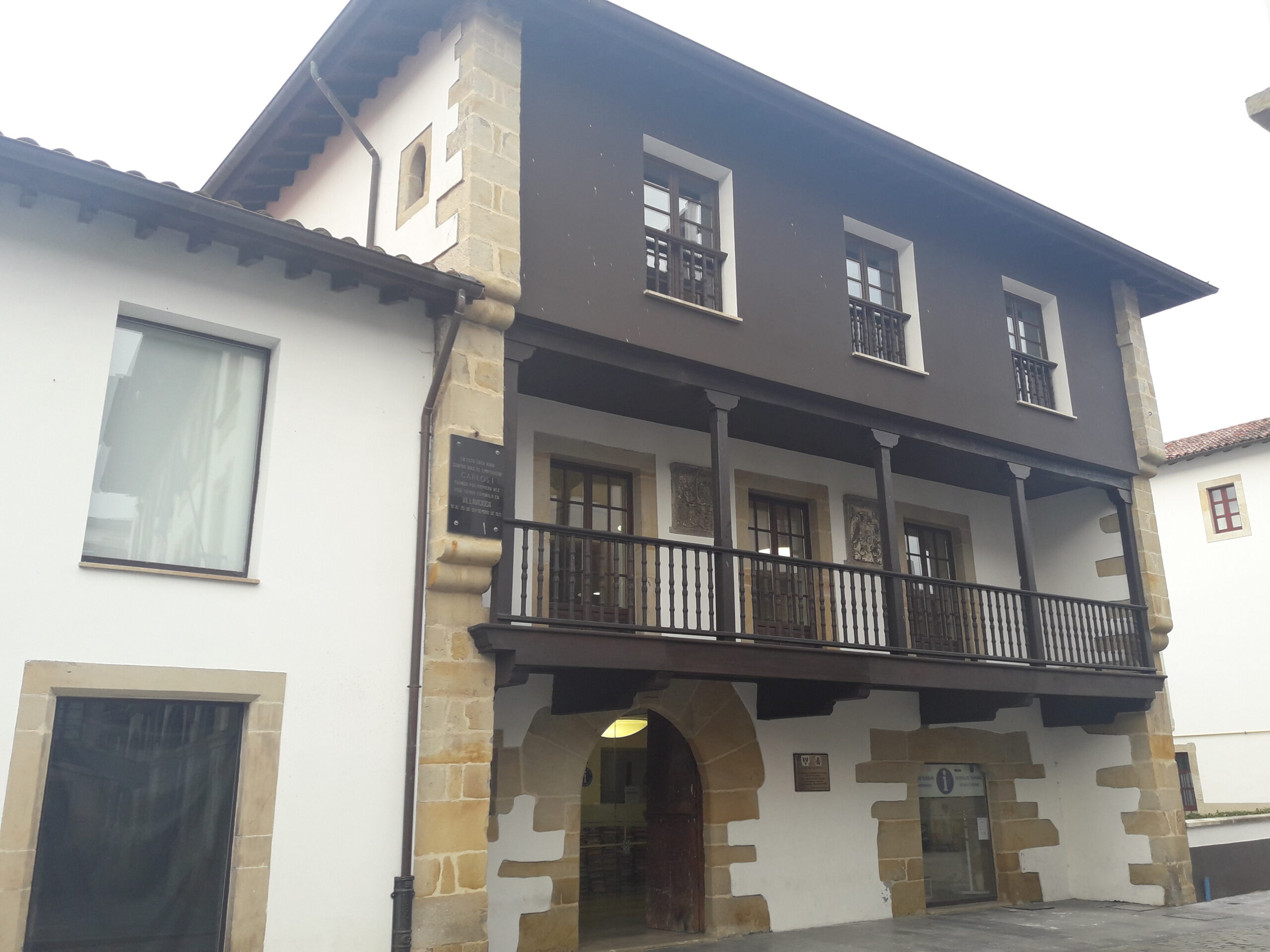Vv-
- Nombre de la obra: Villa de Tazones y Casa de los Hevia – itinerario cultural europeo Ruta de Carlos V
- Localización de la obra: Tazones y Villaviciosa
- Fecha de realización de la obra:
- Autor:
- Investigador: Noelia Fernández García
- Búsqueda en el mapa: Itinerario







Obra recogida en: Fernández García, Noelia. De la reconstrucción a la renovación. La arquitectura religiosa durante el franquismo en Asturias (1938-1965). Gijón: Trea, 2021.
Villa costera de amplia tradición pesquera que ha sido tradicionalmente considerada como el lugar en que desembarcó Carlos de Borgoña en su primer viaje a España. Este hecho ha marcado de forma indiscutible el pasado reciente de la villa, en tanto que éste fue uno de los más relevantes factores tenidos en cuenta para la declaración de Bien de Interés Cultural, en su modalidad de Conjunto Histórico, en el año 1991.
Estudios realizados por expertos, en fechas inmediatamente anteriores a la creación del expediente que desembocaría en su declaración, lo describen como “un pueblo marinero de interés como conjunto”, en el que parece destacar el pintoresquismo de sus viviendas, dado que la mayoría siguen la tipología de casa asturiana, de planta baja y piso con corredor, y concretamente la costera, pues están construidas en sillarejo y parcial o totalmente pintadas en blanco o con colores llamativos.
La villa contaba con una iglesia parroquial, bajo la advocación de San Roque, la cual había sido incendiada durante la guerra civil y que se reconstruyó totalmente. El primer proyecto de reconstrucción, de estilo historicista, fue firmado por el arquitecto Mariano Marín en el año 1945, y parece que el desconocimiento sobre la mencionada reconstrucción hizo que el templo fuera tomado por una iglesia del siglo XVII.
El proceso de patrimonialización de este conjunto comenzó a mediados de la década de 1980, incoándose el expediente de declaración el 11 de abril de 1985, siendo la Real Academia de Bellas Artes de San Fernando la entidad encargada de emitir un informe favorable para la declaración de este Bien de Interés Cultural. Sin embargo, y como ha sucedido en muchas ocasiones, la incoación del expediente no significó la declaración en sí misma, que no se produciría de forma efectiva hasta el mes de mayo de 1991. Y es el extracto del expediente de la declaración de Conjunto Histórico el que nos ofrece información relevante en tanto en cuanto se enumeran los datos que hicieron que Tazones fuese protegida y su conservación más cuidada gracias a su confirmación como BIC
La casa de los Hevia pasó por un proceso de rehabilitación que culminó con la inauguración de esta como “Casa de la Cultura de Villaviciosa”, el 16 de diciembre de 2013. La importante relación del futuro Emperador con esta casona puede observarse simplemente en la fachada donde aparece una placa que reza: “En esta casa vivió/cuatro días el emperador/ Carlos I/ cuando por primera vez/pisó tierra española en/Villaviciosa/ 19 al 23 de septiembre de 1517”.
Con motivo de la restauración de este edificio, se decidió rehabilitar y musealizar la estancia concreta donde se hospedó Carlos de Gante durante ese período de su viaje. Esta estancia, donde se desarrollan parte de las recreaciones de la fiesta, como la audiencia, puede ser dividida en distintos espacios que cumplen con diferentes funciones.
Cuenta con un espacio expositivo donde se albergan distintos paneles informativos en los que se da a conocer la figura de Carlos de Gante, cómo era Villaviciosa en el momento de su llegada, cómo fue su estancia en la casa de los Hevia, y cuál es la memoria de la estancia, es decir, los privilegios concedidos no sólo a la familia Hevia sino también al concejo. Asimismo, también se recogen facsímiles de documentos relacionados con la estancia (cartas en las que se realizan distintas solicitudes siempre recordando el alojamiento del monarca en el concejo). Asimismo, se ha habilitado una exposición de los trajes y del calzado de época usados en las recreaciones, diseñados por Azucena Rico y Alfonso Martínez, respectivamente, así como una mesa y una silla que, a pesar de no ser las originales, parecen ocupar el lugar de aquellas en las que Carlos V pudo escribir cartas informando de su llegada a España. Finalmente, cuenta con lo que sería el aposento en sí mismo, dentro del cual se reproduce una locución en la que el monarca “narra” su viaje y llegada al municipio maliayo.
Fernández García, Noelia. “El conjunto histórico artístico de Tazones: historia, conservación y patrimonialización de la villa donde desembarcó Carlos V”. En Payo Hernanz, René Jesús (et al.), Vestir la arquitectura: XXII Congreso Nacional de Historia del Arte de la Universidad de Burgos, vol. 2. (2019).
